
Men's orthopedic shoes - when are they needed and how to choose?
Orthopedic shoes are not only a medical solution, but an investment in the comfort and health of your feet. Find out when you should consider them, what types exist, how to choose the right model and what brands offer stylish orthopedic footwear.
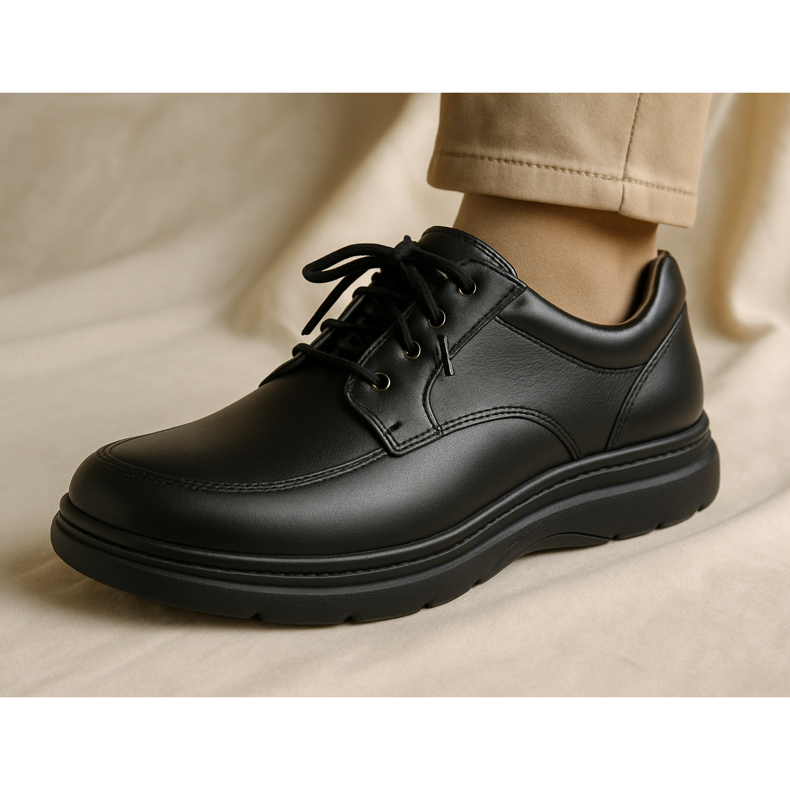
What are orthopedic shoes?
Orthopedic shoes are footwear designed specifically for people with foot, joint or spine problems. They can be both corrective (treating deformities) and prophylactic (preventing problems). Modern orthopedic shoes are significantly different from those from years ago - today they can look stylish and visually indistinguishable from ordinary footwear.
Many people avoid orthopedic shoes for fear that they will look unsightly. This is a myth - today's models combine medical functionality with modern design.
In this guide, you'll learn when to consider orthopedic shoes, what problems they can solve, and how to choose the right model.
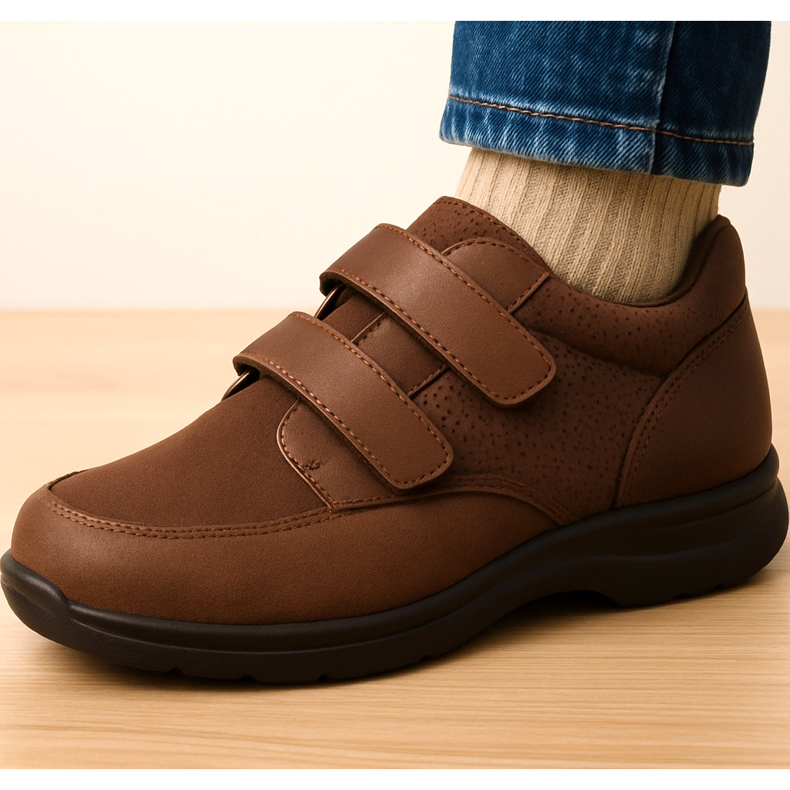
When do you need orthopedic shoes?
Flat feet
Missing or lowered arches in the foot lead to pain, fatigue and posture problems. Orthopedic shoes with arch support can significantly improve comfort.
High instep (cavus foot)
A foot arch that is too high puts excessive pressure on the heels and front of the foot. Good cushioning and even pressure distribution are needed.
Hallux valgus
Hallux deformity requires wide support, a soft upper and a special shape to avoid pressure.
Hammer toes
Deformed toes need shoes with a high upper in the front and soft materials.
Plantar fasciitis (fasciitis)
Acute heel pain requires shoes with excellent arch support and heel cushioning.
Diabetic neuropathy
Diabetics need special shoes without internal seams, with excellent fit and protection against abrasions.
Arthritis and joint inflammation
Joint pain requires maximum cushioning, stability and support.
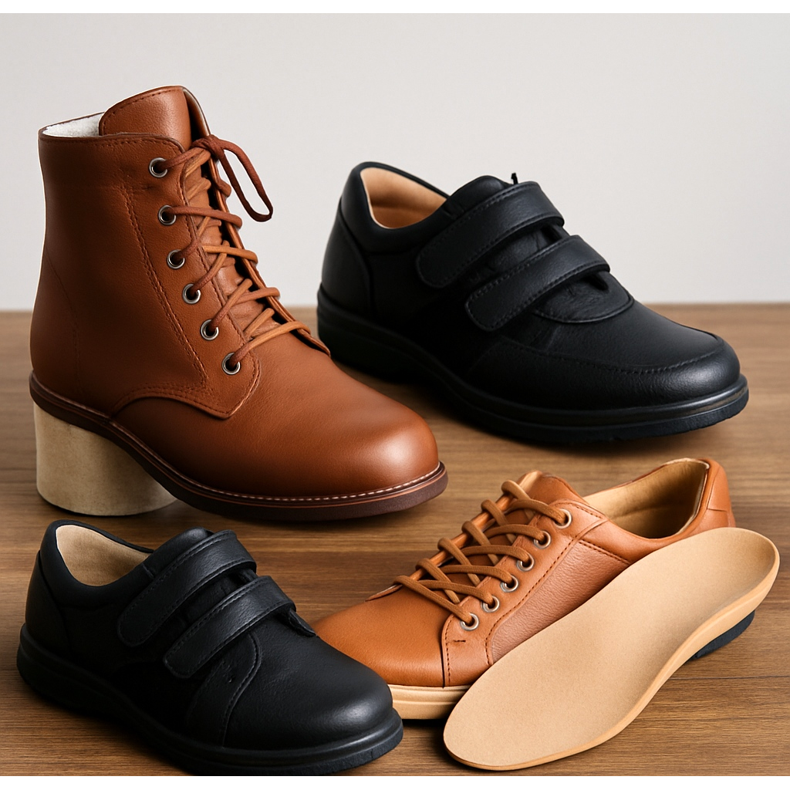
Types of orthopedic shoes
Bespoke orthopedic shoes
For whom: Serious deformities, different leg lengths, very specific problems
How they are created: The orthopedic technician makes a cast of the foot and designs the shoe individually
Price: PLN 1,500-4,000 (partially reimbursed by the National Health Fund)
Lead time: 4-8 weeks
Ready-made orthopedic shoes
For whom: Minor orthopedic problems, prevention
Characteristics: Special design, arc support, wide copying
Brands: Berkemann, Finn Comfort, Waldläufer, Solidus
Price: PLN 500-1,500
Shoes with orthopedic inserts
For whom: People needing arch support and posture correction
Characteristics: Ordinary shoes + individual orthopedic insoles
Insole price: PLN 200-800 (partially reimbursed by the National Health Fund)
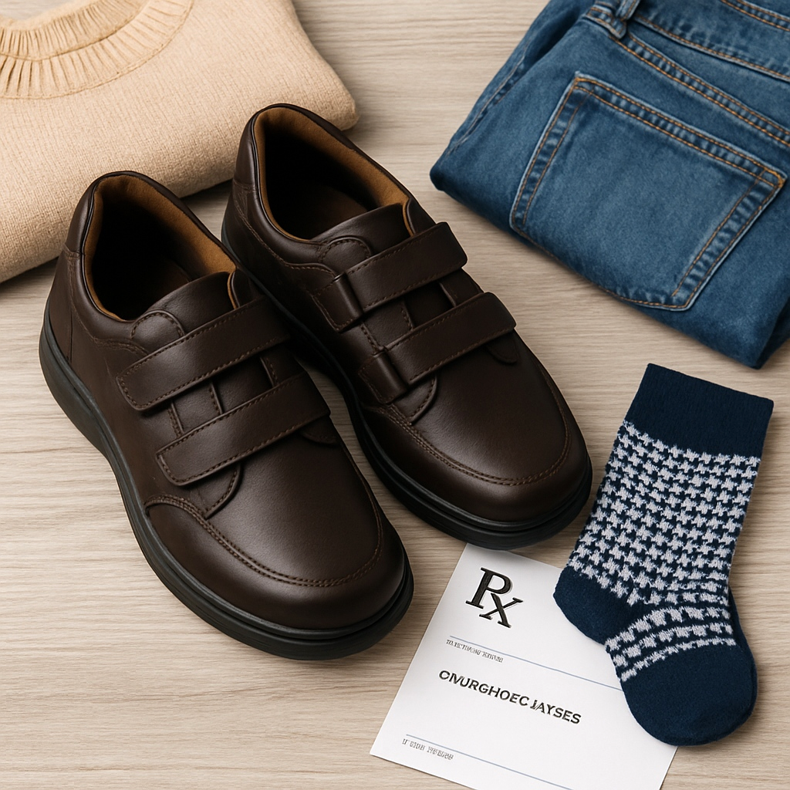
How to start - visit a specialist
Visit to an orthopedist/podiatrist
The first step is to consult a specialist. The orthopedist will assess the condition of the feet, make a diagnosis and recommend an appropriate solution.
Foot examination
It may include: length and width measurement, instep examination (podoscope), gait analysis, X-rays (if necessary).
Prescription for orthopedic footwear
If the problem is serious, your doctor may write a prescription for custom-made orthopedic shoes or insoles. The National Health Fund reimburses part of the costs.
Choosing an orthopedic technician
Look for a certified specialist - check opinions, experience, work portfolio.
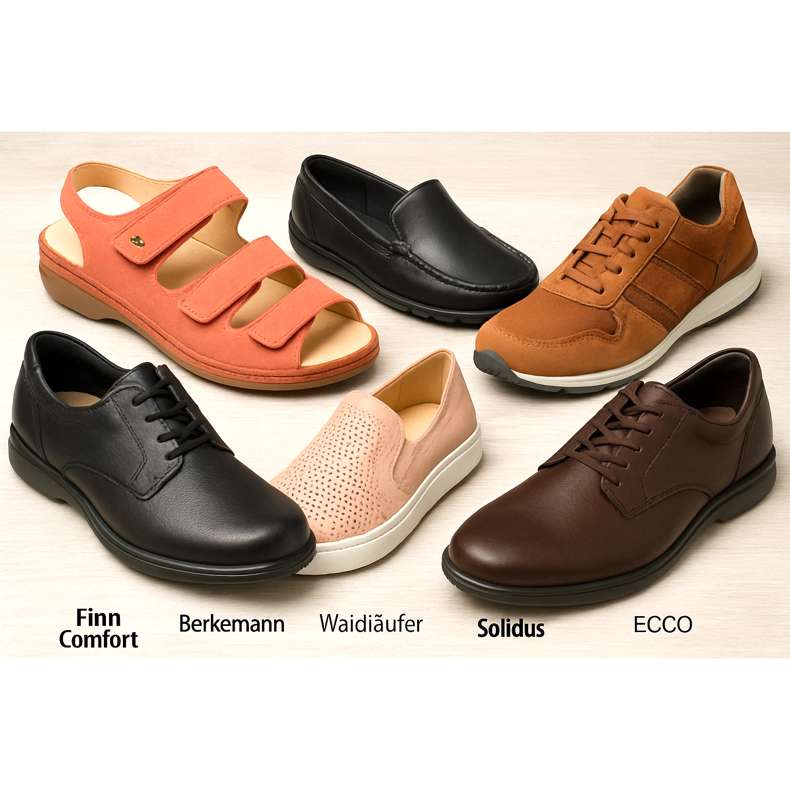
Popular brands of orthopedic shoes
Finn Comfort (Germany)
German premium brand. Excellent arch support, natural leather, wide copy. Price: PLN 800-1,500
Berkemann (Germany)
A German orthopedic brand with a long tradition. Sandals, moccasins, casual shoes with orthopedic insoles. Price: PLN 400-800
Waldläufer (Germany)
Comfort shoes with a wide last and good support. Price: PLN 400-700
Solidus (Germany)
Specializing in orthopedic casual and formal footwear. Price: PLN 500-900
Vionic (USA)
Shoes with Orthaheel technology - arch support approved by podiatrists. Modern design. Price: PLN 400-700
Ecco (Denmark)
They are not strictly orthopedic, but offer excellent comfort and support. Price: PLN 500-1000
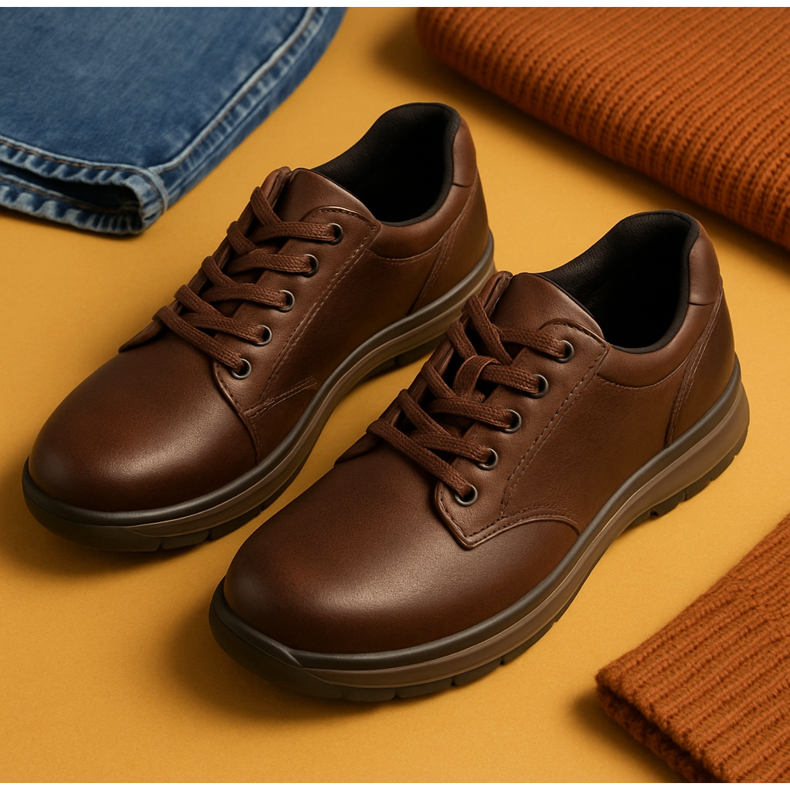
Myths about orthopedic shoes
Myth 1: Orthopedic shoes are ugly
True: Modern orthopedic shoes look like regular footwear. Brands such as Vionic, Ecco, Finn Comfort offer stylish models.
Myth 2: Orthopedic shoes are only for older people
True: Orthopedic problems affect all age groups. Athletes, people who work standing, young people with deformities - all may need orthopedic support.
Myth 3: Orthopedic shoes are very expensive
True: Ready-made models cost PLN 400-900 - comparable to good comfort shoe brands. The National Health Fund reimburses part of the costs of custom-made shoes and orthopedic insoles.
Myth 4: Gel inserts from the pharmacy are enough
True: Gel inserts offer cushioning but not orthopedic correction. For serious problems, individual orthopedic insoles are needed.
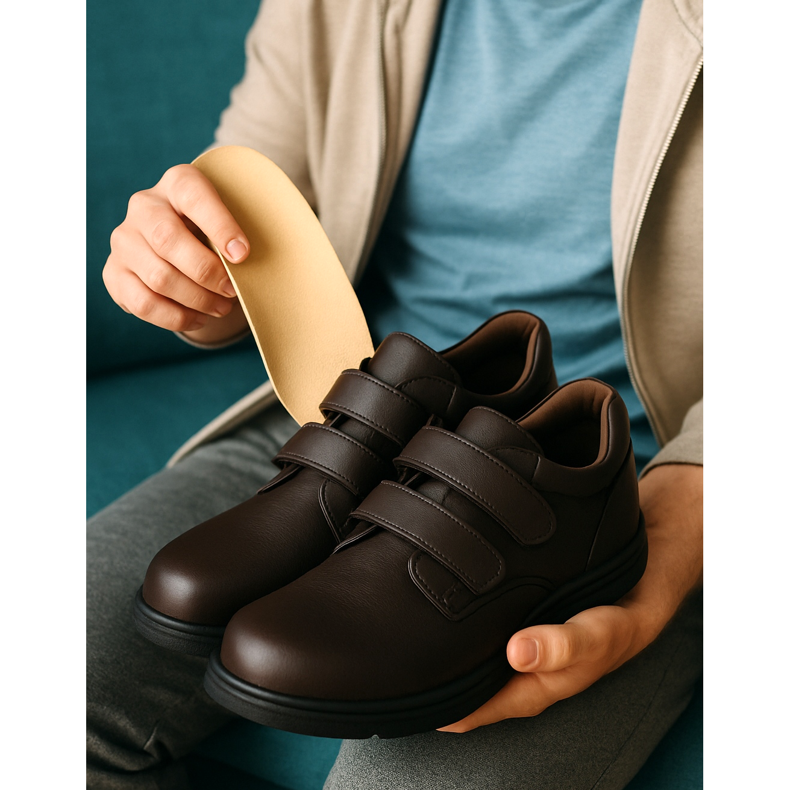
Getting used to orthopedic shoes
Adaptation period
Orthopedic shoes (especially insoles) take some getting used to. Wear them gradually: 1-2 hours a day for the first week, then increase the time.
Discomfort at first is normal
Feet accustomed to poor posture may initially protest against the correction. If the pain is very severe, consult a specialist.
Regular inspections
After a few months, return to the orthopedist for a check-up - the insoles may need to be adjusted.
Not just shoes - exercises too
Orthopedic shoes provide support, but they do not replace exercises to strengthen the foot muscles and physiotherapy.

Alternative: regular shoes + orthopedic insoles
Ordinary shoes + orthopedic insoles
Many orthopedists recommend a combination of regular, high-quality shoes (with a removable insole) and individual orthopedic insoles. It's a cheaper and more flexible solution.
What shoes fit orthopedic insoles?
- Shoes with a removable insole
- Wider models (inserts take up space)
- Laced (better fit)
- Avoid: narrow, stiff, non-adjustable slip-ons
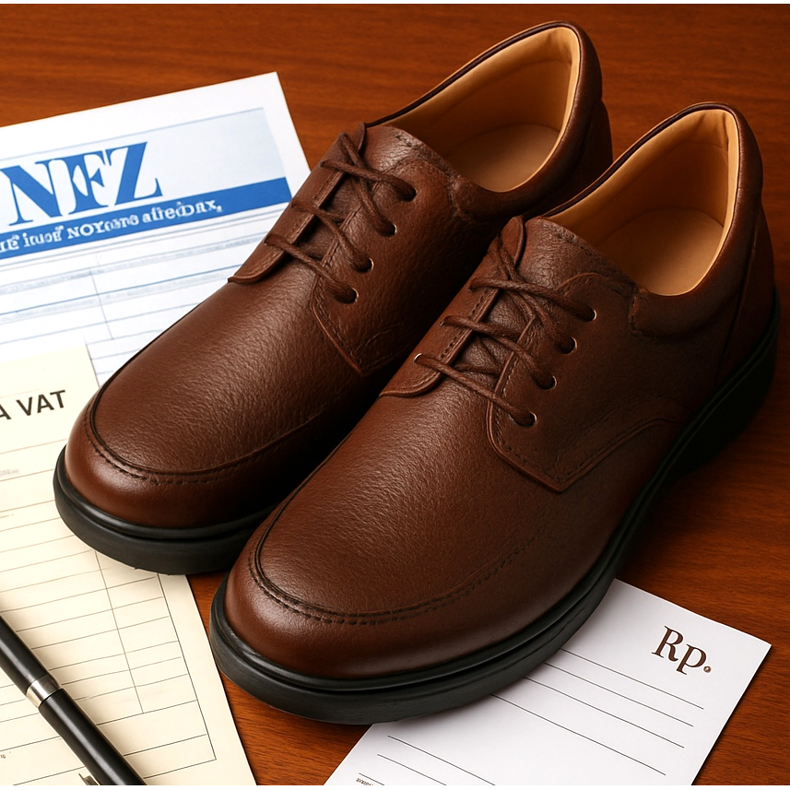
National Health Fund reimbursement and costs
Consult the National Health Fund
The National Health Fund partially reimburses: custom-made orthopedic shoes (with prescription), individual orthopedic insoles (with prescription). Check current reimbursement limits on the National Health Fund website or with your orthopedist.
Documentation
Keep all invoices and prescriptions - they may be needed for settlement with the National Health Fund or as a tax deduction (medical expenses).
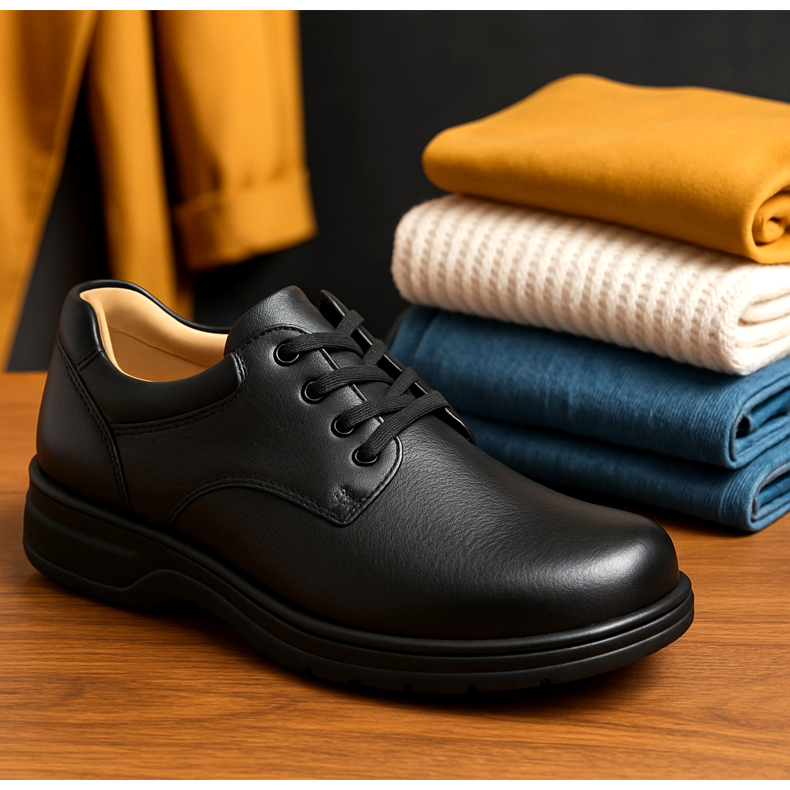
Summary
Orthopedic shoes are not only a medical solution, but an investment in comfort, health and quality of life. If you have problems with your feet, joints or spine, don't ignore them. A consultation with an orthopedist and properly selected footwear can change your life.
Modern orthopedic shoes combine functionality with aesthetics - you don't have to sacrifice style for health. Brands such as Finn Comfort, Vionic and Ecco offer stylish models with orthopedic support.
Remember: healthy feet are the foundation of an active life.